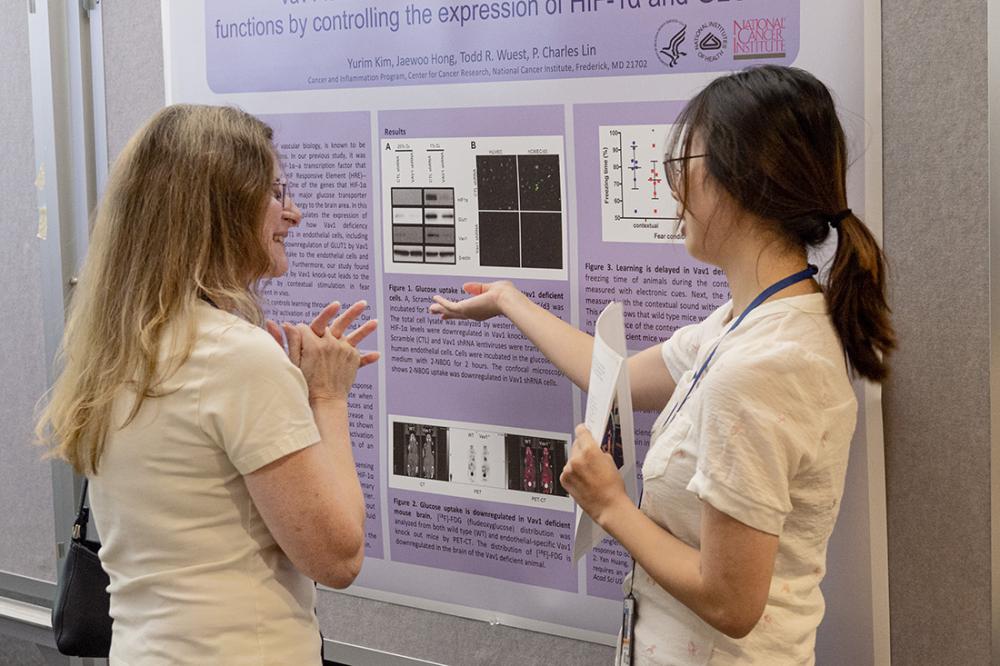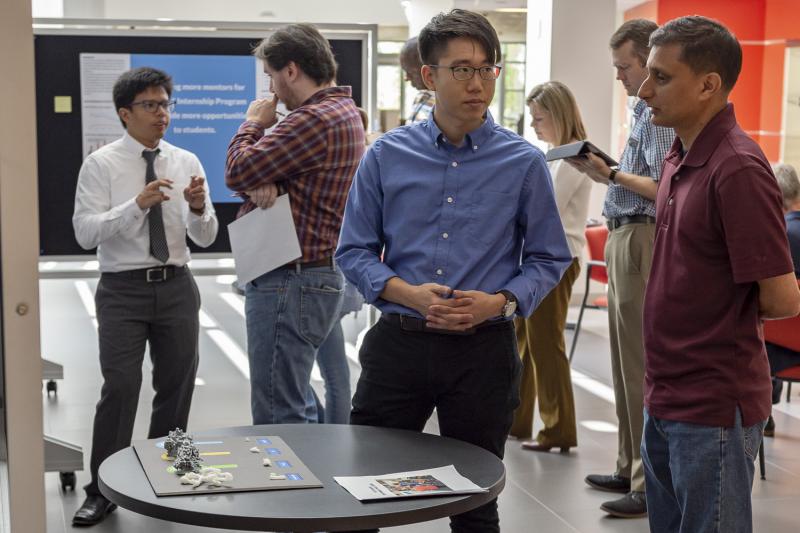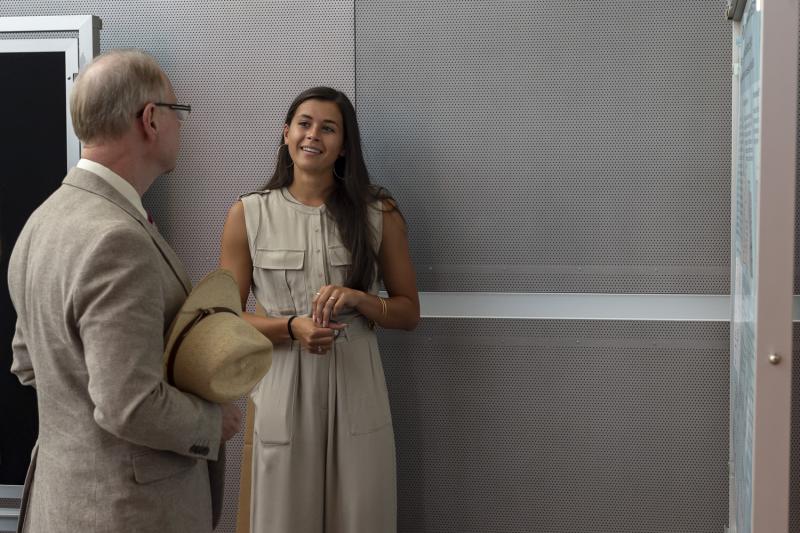Each summer, dozens of students from the Werner H. Kirsten (WHK) and Summer Internship Programs (SIP) who have been hard at work under the supervision of seasoned scientists and mentors gather to share their research with the NCI at Frederick and Frederick National Laboratory community.
Over two days in late July, 46 students ranging from high school to graduate school presented their findings to mentors, scientists, and their fellow interns at the NCI at Frederick campus and the Advanced Technology Research Facility.
This year featured an unusual twist: an experiment involving the posters themselves. New presentation formats were tested against traditional scientific posters, or “Poster 1.0,” which can be wordy, with detailed information about hypothesis, method, technique, results, conclusions, discussion, and next steps. Often, the messages cannot conceivably be digested in a short viewing.
Two new formats, “Poster 1.5” and “Poster 2.0,” were displayed as potential alternatives. Poster 2.0 used fewer words and focused on the main takeaway of the experiment. Poster 1.5 was essentially a hybrid of 1.0 and 2.0. WHK intern Julia Lizmi conducted the experiment to determine which format poster visitors preferred.
Two student posters became the experiment’s control group: the first, “Electron Microscopy Analyzes Macrophages in Mouse Lung Tissue,” came from Walkersville High School student Benjamin Smith. The second, by Liberty High School’s Anjan Singh, was titled, “Cloning and Expression of SPTLC1 in Mouse CD4 T-cells using Lentiviral Expression System.” Both posters used a similar, conventional format.
Poster 2.0, displayed by Ishika Srivastava, was titled, “Changing the Future of Emerging Scientists Through Mentorship.” It had a noticeable difference in the overall message and communication, with the conclusion situated prominently in the middle to catch the reader’s attention. The sides of the poster displayed information and graphics to further explain the topic. The poster also included a QR code that, when scanned by a smartphone app, connected the viewer to a web page about becoming a mentor.
Finally, “Poster 1.5,” which belonged to Hanbin Lee, was titled, “3-D Printing as a tool to visualize cell biology at the nanoscale.”
He described it as “an easier-to-make poster, because of the number of pictures. The format was a good method of engaging people. ... I personally think that poster 1.0 has too much text and poster 2.0 does not have enough information. Poster 1.5 is a nice middle ground.”
For her part, Lizmi predicted that Poster 2.0 would be the most successful “because it’s really easy to read and understand,” though she was excited to see the actual results.
Systematic data analysis by WHK intern Gabriel Brewster showed that people were drawn to Poster 1.5 first and foremost. Additionally, 67 percent of surveyors said they would try one of the new formats.
Lizmi added that, “a good mix of people favored the new formats. Mentors, interns, and scientists all had their own preference for the posters. I didn’t see too much bias based on profession.”
Asked what he thought of the experiment, Scientific Program Director Walter Hubert, Ph.D., said, “I was a big fan of Poster 1.5 because, as a Senior Scientist, I’m accustomed to a certain structure, of finding information in certain places. Also, I believe that 1.5 allowed for the flow of information to be in a logical manner. The 2.0 version was too poster-ized, like ‘pop-art.’ 1.0 had an overload on text. So, 1.5, to me, felt like a good approach, where you take just the essential data and show a pictorial or visual if possible and take it from there.”
Many students had devoted their summers to working on the studies they presented during the poster days. Most seemed thoroughly prepared for the event.
“I practiced my poster a lot in the lab. The undergrads made me recite and memorize the online version. I think it was really helpful,” recalled Thomas Johnson High School senior Zoe Poppert.
The event also encouraged students to learn about their fellow interns’ work.
“We are math interns. We don’t get to see a lot of what happens in the wet labs, so I’m very excited to see what other types of research people are doing,” said Laura Gayowski, who works alongside Josephine Kievsky in the Advanced Biomedical Computational Science group.
Additional opportunities for the students to display their findings will be available in the future.






